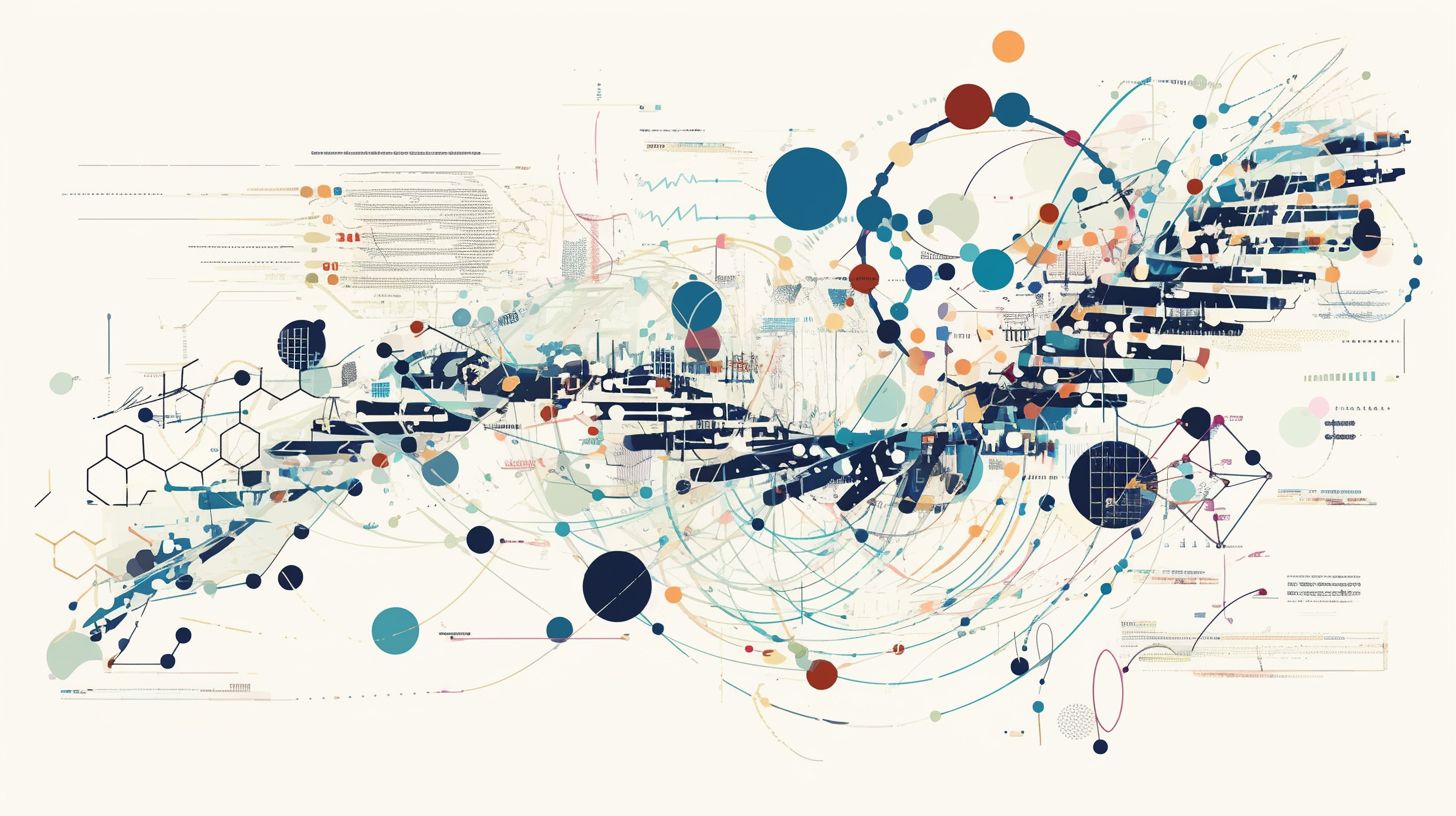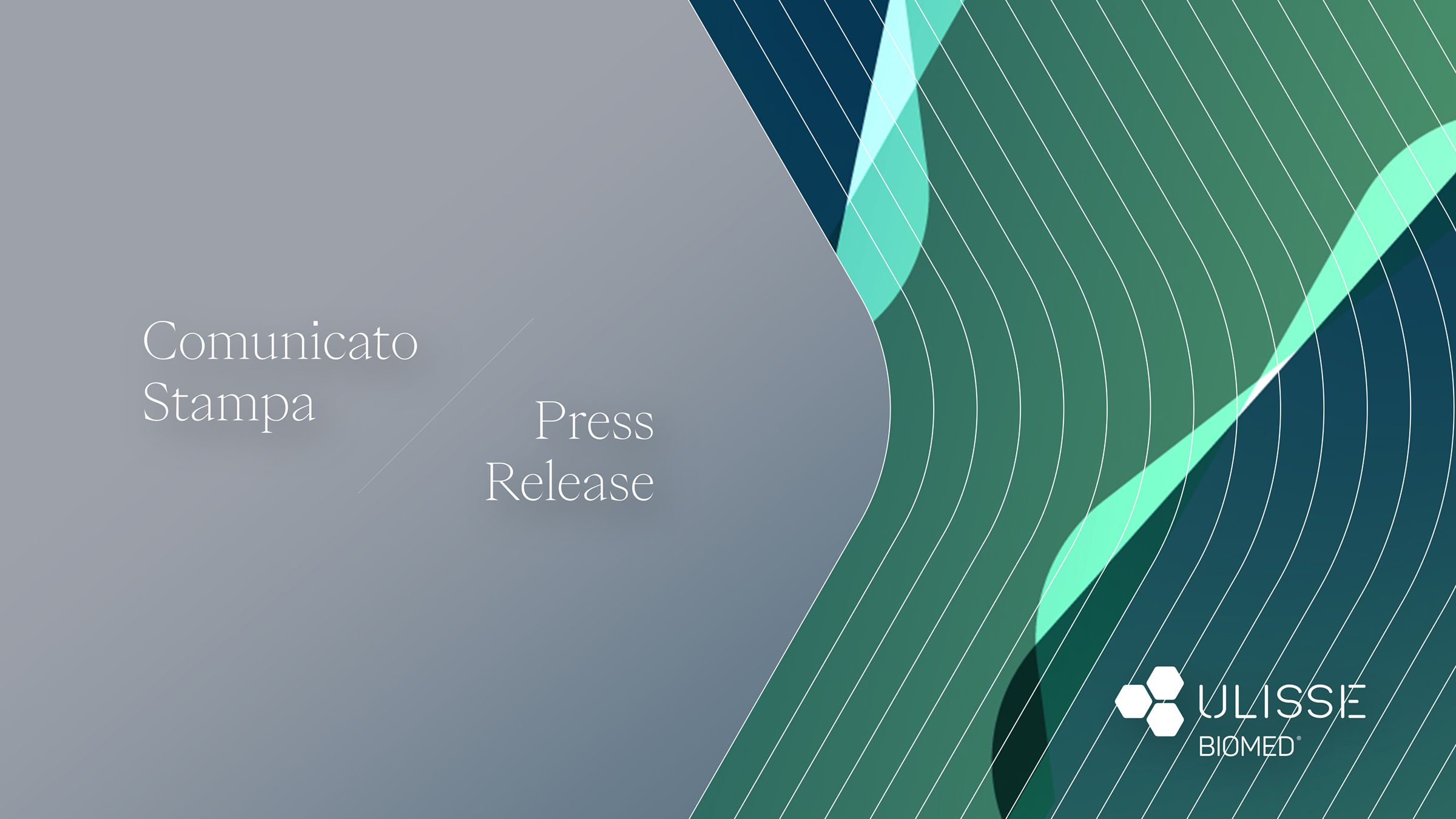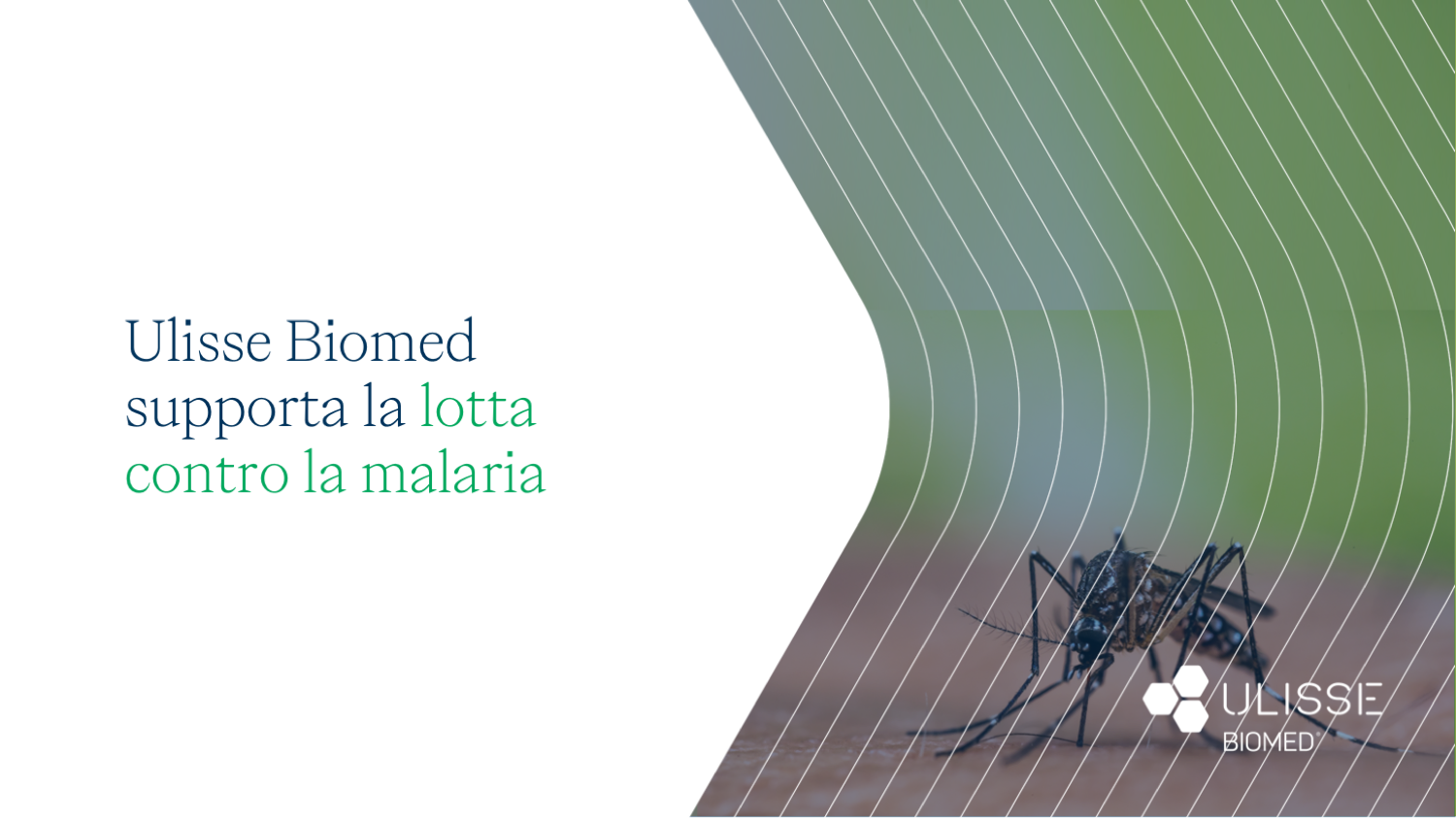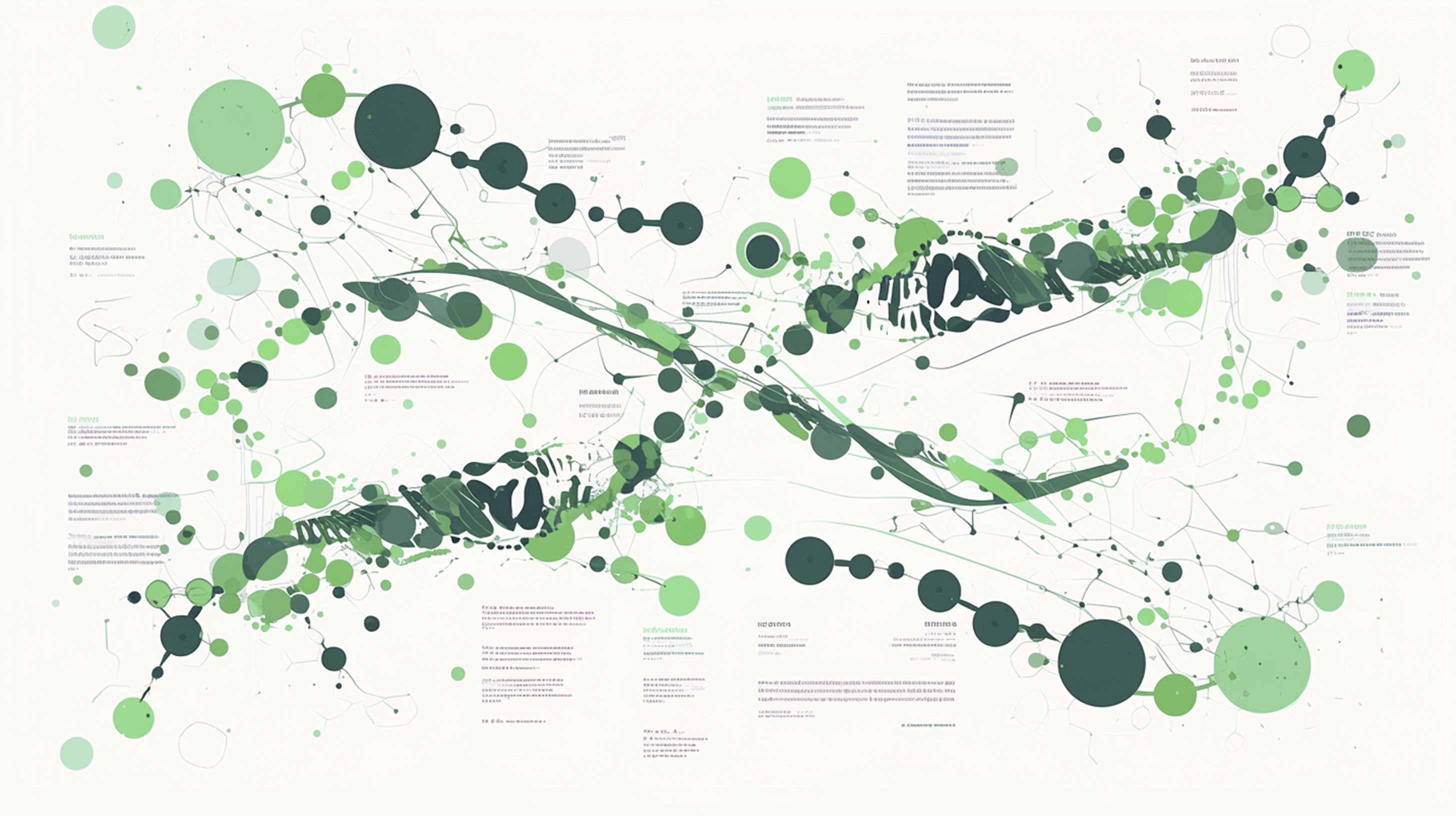Reading time [minutes]: 7
Vision & Strategy
Innovation and sustainability in molecular diagnostics
Innovation only has value if it is also sustainable. Ulysses Biomed makes this a guiding principle, between AI, cloud and decentralisation.
Abstract
In the new world of molecular diagnostics, innovation and sustainability are no longer separate areas but converging strategies. Through its post-merger integration with Hyris Ltd, Ulisse Biomed offers a distributed, AI-driven model based on the Hyris System™ platform. Portability, interoperability, cloud computing and ambient-stable reagents are at the heart of a vision that aims to reduce TAT, increase ROI and reduce environmental impact. In this article, Lorenzo Colombo (COO) recounts the journey that has led the company to make faster, fairer and greener diagnostics a reality.
- Snapshot
- Introduction
- 1. AI and automation: the intelligent laboratory
- 2. Portability and optimisation of clinical flows
- 3. Interoperability and cloud architecture (bAPP)
- 4. Diagnostic KPIs: TAT, cost/test and ROI from an innovative perspective
- 5. Logistics Impact Reduction and Industrial Sustainability
- INTERVIEW - Lorenzo Colombo
Snapshot
- Molecular diagnostics
A discipline that detects diseases and genetic markers by analysing nucleic acids (DNA/RNA). It includes technologies such as PCR, with applications in personalised medicine, infectious diseases and precision screening. - Distributed diagnostics
Decentralised diagnostic architecture allowing tests to be performed directly close to the patient (clinic, peripheral laboratory, remote sites), while maintaining an active link with the central laboratory for quality control, data collection and supervision. - Hyris System™
Proprietary hardware/software ecosystem for real-time genetic analysis. Includes portable devices (bCUBE™), cloud platform (bAPP™) and AI modules for automatic test execution and interpretation. - bCUBE™
Miniaturised, cloud-connected qPCR instrument designed for molecular testing in hospitals, clinics and community settings. It combines portability, reliability and automation. - Ambient-stable reagents
Molecular kits designed to maintain stability at room temperature, without a cold chain. They reduce logistical costs, waste and environmental impact. - Interoperability
Ability of diagnostic and management systems to exchange data automatically and securely. Enables real-time synchronisation between devices, cloud, LIMS and electronic health records. - TAT – Turnaround Time
Time between the request for a test and the availability of the report. Key KPI in clinical diagnostics; a reduction in TAT improves speed of therapeutic decisions. - ROI – Return on Investment
Economic indicator measuring the efficiency of investment in diagnostic technology. It takes into account operational costs, clinical benefits, logistical savings and new market opportunities.
Introduction
In the rapidly evolving field of molecular diagnostics, innovation and sustainability are no longer parallel options, but converging dimensions of the same industrial strategy. The integration of artificial intelligence, device portability and cloud-first architectures is enabling a new diagnostic paradigm: distributed, automated and highly efficient, capable of delivering clinical and economic value across the entire testing chain. It is not just a question of operational speed: it is a model transformation that redefines the accessibility, resilience and environmental impact of healthcare systems.
Following its strategic consolidation with Hyris Ltd, Ulisse Biomed embodies this evolution, positioning itself as an integrated technology hub for AI-driven molecular diagnostics. Thanks to proprietary solutions that combine hardware miniaturisation, end-to-end automation and digital interoperability, the company enables high-quality laboratory testing directly at the point of care, reducing hidden costs, waste and response times.
"Every innovation we introduce comes with a clear objective: to make diagnostics faster, fairer and more sustainable."
— Colombo Lorenzo, CTO Ulisse Biomed
In this insight, Lorenzo Colombo, Chief Technology Officer at Ulisse Biomed, will guide us on a journey that goes beyond technological innovation: we will discuss operational culture, strategic vision and industrial choices that make every promise of decentralisation, sustainability and resilience a reality. Through his words – and with data to back them up – we will discover how Ulisse Biomed is redesigning, step by step, the standard of modern molecular diagnostics.
1. AI and automation: the intelligent laboratory
Artificial intelligence is redefining the standards of molecular diagnostics by introducing levels of accuracy and speed that were once unthinkable. Machine learning algorithms applied to complex biological datasets enable the distinction of minimal genetic patterns with extremely high sensitivity and specificity, reducing false positives and negatives. At the same time, deep learning tools accelerate the analysis of genomic sequences and other clinical big data, reducing processing times from hours to minutes. The result: pathogens or critical mutations can be identified in real time, with tangible clinical benefits.
Ulisse Biomed has integrated AI into the heart of its technological offering, with proprietary modules within the Hyris System™ platform (specifically in the bAPP™ cloud suite). These modules are able to automatically interpret qPCR amplification curves and provide clear reports, reducing the need for human intervention. The result is radically enhanced operational efficiency, enabling complex tests to be performed even in settings with non-specialist personnel.
At an organisational level, this frees up the most skilled human resources from repetitive tasks, allowing them to focus on tasks with greater added value. At a strategic level, the combination of AI and automation paves the way for new diagnostic models: remote monitoring of emerging pathogens, predictive epidemiological surveillance and real-time adaptive diagnostics. It is in this scenario that Ulisse Biomed stands out as a key player, with technology that not only enhances diagnostics but transforms it from reactive to proactive.
"When artificial intelligence works in synergy with automation and the cloud, we get more accurate and autonomous diagnostics that can actually anticipate disease, not just detect it."
— Lorenzo Colombo
2. Portability and optimisation of clinical flows
The portability of diagnostic equipment is critical to making healthcare systems more responsive and distributed. Next-generation diagnostic devices enable molecular testing to be performed directly at the point of care, eliminating delays caused by transporting samples to centralised laboratories. This translates into turnaround times reduced from days to minutes, with immediate benefits for patients and clinicians.
Thanks to the portable bCUBE™ device, Ulisse Biomed allows qPCR analysis to be carried out in any context: large and small laboratories, local hospitals or remote sites. The results are immediately shared in the cloud via the bAPP™ platform, making them accessible in real time to all authorised members of the clinical network. This marks a shift from a sequential model (sampling → transport → analysis → report) to a parallel and distributed model, where the test follows the patient.
This approach streamlines clinical workflows, improves resource management and increases the efficiency of the healthcare system. Laboratories can focus on complex analyses, while more common tests are decentralised. In addition, rapid access to diagnostic data reduces the risk of inappropriate treatments, prolonged hospital stays and avoidable hospitalisations. In a health emergency or widespread screening context, such as during a pandemic, the distributed model allows diagnostic demand peaks to be absorbed without overwhelming centralised infrastructures.
Ulisse Biomed thus demonstrates how portability is not just a technical feature, but a strategic lever for increasing resilience, timeliness and accessibility in modern diagnostics.
"We designed bCUBE™ for exactly this reason: to bring laboratory quality everywhere, without compromise."
— Lorenzo Colombo
3. Interoperability and cloud architecture (bAPP)
In a clinical setting where data must travel quickly between devices, departments and healthcare facilities, interoperability becomes key to ensuring continuity, efficiency and safety in diagnostics. Ulisse Biomed has adopted a cloud-first approach centred on the bAPP™ platform, designed to act as a digital hub for the entire diagnostic ecosystem. Every Hyris System™ device in the field – whether it's a bCUBE™ in a remote clinic or a hospital terminal – is connected to the cloud in real time, enabling centralised control and immediate access to data by all authorised users.
The strength of this architecture lies in its native interoperability: diagnostic results generated at a remote site are automatically synchronised, validated and shared with electronic health records, LIMS systems and medical portals, reducing the margin for error and simplifying administrative workflows. This not only speeds up the clinical decision-making cycle, but also enables end-to-end visibility of operational KPIs and epidemiological trends.
From an operational standpoint, the cloud enables real-time software updates across the entire device network, facilitating predictive maintenance and centralised rollout of new diagnostic protocols. In addition, the bAPP™ platform is designed to collect aggregated diagnostic data in a structured manner, providing advanced dashboards for performance analysis, trend tracking and optimisation of instrument usage in the field.
This architecture is not just a technological enhancer, but a true strategic enabler. With a view to scalable growth and global compliance, Ulisse Biomed can quickly integrate new nodes into the diagnostic network without compromising data security, traceability and governance. Cloud interoperability is what transforms a set of distributed devices into a single intelligent system capable of learning, reacting and improving over time.
4. Diagnostic KPIs: TAT, cost/test and ROI from an innovative perspective
When adopting advanced technologies for molecular diagnostics, three indicators guide the operational and strategic choices of laboratories, clinics and investors: Turnaround Time (TAT), cost per test and Return on Investment (ROI). Ulisse Biomed has developed solutions that respond precisely to each of these metrics, transforming them from simple efficiency measures into levers for value creation.
Turnaround Time (TAT). The decentralised approach drastically reduces reporting times. By eliminating sample transport and integrating automatic analysis via AI, Ulisse Biomed provides real-time results during the same clinical visit. This has a tangible impact on the timeliness of care, especially in acute or critical settings, and improves the patient experience by reducing waiting anxiety and the risk of delayed treatment.
Cost per test. Although the direct cost of a distributed test may initially appear higher than that of a centralised laboratory, an analysis of the total cost reveals a different picture. Integrated automation, supply chain verticalisation and reduced logistics steps significantly lower hidden costs: fewer dedicated staff, lower reagent consumption, fewer errors and fewer retests. The use of ambient-stable reagents and optimised cartridges also reduces waste and simplifies the cold chain, further contributing to economic efficiency.
Return on Investment (ROI). The combined effect of reduced TAT and a leaner cost structure is reflected in improved ROI. Investing in Ulisse Biomed technologies not only saves on direct costs, but also opens up new revenue opportunities: tests that can be performed in new contexts, a greater number of patients served, and competitive differentiation.
These KPIs are not treated as simple operational indicators, but as strategic performance metrics capable of demonstrating the industrial sustainability and clinical efficiency of the Ulisse Biomed model. Diagnostics that measure not only what happens in the laboratory, but also the value it generates in the healthcare system.
5. Logistics Impact Reduction and Industrial Sustainability
The technological innovation pursued by Ulisse Biomed is inextricably linked to a vision of systemic sustainability. It is not just a question of improving clinical results, but of doing so while minimising environmental impact and maximising the efficiency of the diagnostic chain.
Logistics streamlining. Bringing diagnostic tests to where the patient is, rather than transporting biological samples to centralised laboratories, significantly reduces emissions associated with road and air transport. Hyris System™ devices – in particular the bCUBE™ – represent a new way of working: tests travel in digital format, rather than physically. This drastically reduces the use of packaging, single-use materials and fuel, with a measurable environmental impact.
Energy efficiency and miniaturisation. Portable diagnostics consume a fraction of the energy compared to large centralised laboratories. Hyris System™ devices, which can also be powered by mobile or renewable sources, enable high-precision testing with a low energy footprint. Miniaturisation thus becomes an ally of sustainability.
Circular design and optimised supply chain. By designing reagents and hardware in-house, Ulisse Biomed controls the entire supply chain. This reduces waste, allows the use of multi-function cartridges and reagents that are stable at room temperature, eliminating the need for refrigeration during distribution. The combined effect is a reduction in the consumption of plastic, energy and single-use materials.
Digitalisation and sustainable reporting. Data travels electronically via the bAPP™ platform, reducing the use of paper, physical archives and document transport. In addition, digital diagnostics enable predictive maintenance via software, extending the useful life of devices and preventing premature disposal.
In summary, Ulisse Biomed's technological model is a virtuous combination of efficiency, precision and environmental responsibility. Modern diagnostics cannot ignore a sustainable approach, and the company's industrial strategy demonstrates how innovation and ESG impact can reinforce each other, generating long-term value for patients, operators and investors.

INTERVIEW
Lorenzo Colombo, CTO of Ulisse Biomed
Lorenzo Colombo, Chief Operating Officer at Ulisse Biomed, shares his vision on the operational-strategic role that has guided — and continues to guide — the company's industrial evolution: from the post-merger phase with Hyris to the construction of a distributed molecular diagnostics model that is sustainable and capable of growing in a consistent and scalable manner.
After integrating with Hyris, what was the real strategic change for Ulisse Biomed?
LC: The most profound change has been cultural. It's not just a question of technology or finances. We had to bring together different visions, harmonise operational approaches and merge two souls into a single, cohesive and scalable structure. And to do that, you need method, vision and a certain sensitivity. That has been at the heart of my role.
You oversaw the post-merger harmonisation. What were the critical factors to monitor during the operational phase?
LC: If we're talking about major challenges... the list would be long. But I remember very well the ones that made me sweat the most. And they are also the ones I can talk about with the most pride. I can say with certainty that there were three critical factors that carried the most weight, all of them very concrete: interoperability between teams, clarity in processes and consistency in objectives. We focused heavily on aligning operational expectations, simplifying where possible and building new routines without losing agility. All this without ever forgetting who we are and where we want to go.
At this point the question arises... where would you like to go from here?
LC: It's only a simple question on the surface. Where do we want to go? Of course, there are measurable goals, industrial milestones, room for improvement. But sometimes – in fact, almost always – it's not so much the destination that matters as the journey. We want to build a model that works well, everywhere. One that is easy to understand for those who use it, transparent for those who manage it, and consistent with our values. To do this, we need very solid central management, but also a constant ability to adapt. Every operational point must meet the same standards, but not with the same approach. We need flexibility, trust in our teams and a shared organisational culture. We work to ensure that every node in the network is autonomous, but also aligned. This cannot be built in a week. It takes time, presence and discussion. It also takes mistakes. And the willingness to correct them.
How important is the operational culture that, through its role, seeks to translate this into concrete actions on a daily basis?
LC: A great deal. My job is not only to ensure that processes function, but also to create the conditions for them to improve every day. The operating culture is the thread that ties together daily decisions with the long-term vision. Innovation is often seen as a sudden leap, a discontinuity. But in my experience, it is almost always the result of a consistent series of organisational behaviours. Who makes the decisions? How do we document them? How do we deal with the unexpected, or margins of ambiguity? These are the questions that matter. And if those who ask them have a shared method, then innovation also finds the space to become concrete.
How important is innovation for Ulisse Biomed? Many companies tend to consolidate technologies, create a well-established offering and become leaders in their sector. Is Ulisse Biomed also seeking to follow this path?
LC: Ulisse Biomed approaches the market with the same rigour as any industrial biotech company: solid processes, consistency throughout the supply chain, and reliable results. But there is one distinctive feature that is non-negotiable for us: continuous innovation. We are not looking for a comfort zone, but a path of constant evolution.
And it's not a question of ambition per se: it's that without innovation, sustainability is not possible. The balance between environmental impact, operational resilience and accessibility is not achieved once and for all: it is a dynamic process. For me, sustainability is first and foremost a design criterion. If something is sustainable, then it is also more efficient, easier to manage and more robust over time. And this applies everywhere: in logistics, in the choice of materials, in protocols and in internal culture. When sustainability becomes a constructive constraint rather than an add-on, it also becomes a competitive advantage.
Sources and bibliography
Wang Z. et al. (2021). Point-of-care diagnostics for infectious diseases: From methods to devices. Nano Today, 37:101092. https://www.ncbi.nlm.nih.gov/pmc/articles/PMC8214422
Snider A. et al. (2024). Contributing to environmental sustainability of healthcare systems through Diagnostic Network Optimization. PLOS Blogs. https://latitude.plos.org
Kraemer M.U.G. et al. (2025). Artificial intelligence for modelling infectious disease epidemics. Nature, 638(7930):623–635. https://www.nature.com/articles/s41586-024-07191-4
Ulisse Biomed & Hyris (2024). Comunicato integrazione Ulisse Biomed – Hyris. Hyris News, 15 Gen 2024. https://www.hyris.net/news/integrazione-ulisse-biomed











